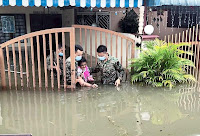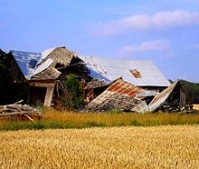Democracy summit will dodge questions on governance gap between China and US:
There is something more than a little ironic about President Biden's Summit for Democracy this week. The intention is blindingly obvious: to rally the troops in favour of Western-style democracy and draw a line in the sand between "democracy" (ie, the West) and "autocracy" (ie, China and Russia). In this Biden faces two huge problems, which will get little or no airing at the Summit. First, the Western democracies are in serious difficulties. And second, that China, in terms of governance, has been seriously out-performing the West.
The US talks about democracy in the manner of a slick TV advert. It is all good and no bad. It is timeless. It has long reigned and will reign forever. It cannot be improved upon. This, of course, is nonsense. No form of governance has, or will, last indefinitely. There are multiple signs that Western democracy is losing its popularity. Numerous Western polls have indicated growing disillusionment in their political systems.
Ultimately, any form of governance depends upon its ability to deliver. Whatever the fancy words, this is the bottom line. If it fails to deliver, then people will look for alternative forms of governance. Western governance was at its most successful during the long boom between 1945 and the mid-1970s. It delivered rapid economic growth, full employment, generous welfare reforms and prosperity. In the 1959 general election, the British Conservative Prime Minister ran on the slogan "You've never had it so good." He was right. And the Conservatives won big time. Even during the following rather less successful period between 1980 and 2007, Western governance still worked after a fashion. The turning-point was the Western financial crisis in 2008, the worst since 1931.
Ever since then, living standards in the West have struggled to return to even where they were in 2007. All the Western economies have remained on life-support, with zero or near zero interest rates, following the financial crisis. Their economic woes had political consequences, with growing disillusionment in the mainstream political parties and their leaders and, more seriously, in societal elites and governing institutions. The most dramatic case was the United States, the citadel of Western democracy. The reasons for the disaffection go back long before 2008: nearly half of all Americans have experienced static or falling living standards since 1980. Trump gave voice to the anti-establishment anger. His attitude towards democracy is, to put it mildly, unclear, as his covert support for the Insurrection at Capitol Hill last January well illustrates. Biden won the 2020 presidential election, but what will happen in 2024 is anyone's guess. The country is deeply divided and polarised to the point where there are almost two Americas. For the first time since the Civil War, there are serious doubts among Americans as to whether their democracy can survive.
Democracy works in good times but not so well in bad times. Between 1918 and 1939, a large majority of European states lived under various forms of dictatorship for part of, or most of, that period. Democracies were, for the most part, few and far between. The overriding reason was the Great Depression, with falling living standards, huge unemployment, impoverishment, racism, nationalism, and acute political polarisation.
Even if Western-style democracy survives, and it likely will in most Western countries, such are its deep roots, it will enjoy nothing of the elan and prestige it possessed during its heyday in the long boom, or even between 1980 and 2007. The reason is simple. Between 1945 and 2000, the West dominated the world. In 1970 it accounted for two-thirds of global GDP. The United States was by far the dominant country. Now the West accounts for rather less than half of global GDP while China, in terms of size, is on a par with America. We are in the process of transitioning to a post-Western world. Domestically and internationally, Western leaders enjoy much less prestige and authority than they did during the second half of the 20th century. Compare the regard in which Roosevelt, Eisenhower and Kennedy were held with that for George W Bush, Trump and Biden. And the same can be said of the declining respect for the US political system. The allure of democracy has greatly diminished.
The rise of China since 1978 has become a new measure of the performance of the United States and the West. Over this period China has out-performed the West in terms of delivery: the supercharged growth rate, the transformation in living standards, the huge reduction in poverty, the increase in life expectation, the long run social stability and the very high approval ratings. The way in which China has handled the pandemic, with just 4,636 deaths compared with 787,695 deaths in the US, is a powerful endorsement of Chinese governance and a shameful exposure of that in the US. Western democracy is under huge pressure both internally and externally. And the gulf between the relative performance between the US and China is set to grow ever wider.
These are the questions that should be discussed at the Summit for Democracy. But they won't be.
Moral vacuum at the heart of modernity, now embodied in US laws!
` ` MAN and nature are running out of time. That’s the core message of the UN Inter-governmental Panel on Climate Change ...

Moral vacuum at the heart of modernity, now embodied in US laws!
`
UN secretary-general António Guterres called the report a “code red for humanity”. “The evidence is irrefutable: greenhouse gas emissions from fossil fuel burning and deforestation are choking our planet and putting billions of people at immediate risk.”
`
What can we, individually and collectively, do about it?
`
Many animals and human beings cannot survive at high temperatures. Seattle, a temperate climate city, hit 104 degrees Fahrenheit in June, only four degrees below the maximum 108 degrees where humans can’t survive.
`
Like the pandemic, the twin effects of climate warming and biodiversity loss are hurting the bottom half of society who are most vulnerable to natural and/or man-made disasters.
`
Indeed, indigenous and native people who live closest to nature, comprising 5%-6% of world population scattered in remote areas, are likely to face loss of culture, lives and habitat because all their water, food and livelihoods will be devastated by climate change.
`
In essence, we are in an existential situation whereby nature is being destroyed by human excess consumption, which creates pollution and carbon emission, but all this is made possible by monetary creation by bankers and businesses who seem to care more about their profits than the human condition.
`
Thus, decisions over climate change, human activities, financialisation and globalisation are essentially moral questions over the power to lead us out of the wilderness of nuclear destruction through war or planetary burning.
`
In his monumental “History of Western Philosophy” (1946), British philosopher Bertrand Russell argued that those in power understand that they have twin powers over nature and political power to rule other human beings.
`
Traditionally, the limits to such power have been God and truth. But today, religions are also in turmoil on what is their role in finding pathways out of the current mess. Furthermore, FakeNews obscures what is truth.
`
The current mess is not unlike the Lost People wandering in the desert waiting for Moses to find the 21st century version of the 10 Commandments. Unfortunately, the 17 UN Sustainable Development Goals (SDGs) are aspirations and not commandments.
`
As economists say, climate change is a market failure, but there is no modern day Moses nor operating manuals to translate SDGs to environmental, social and governance (ESG) projects and programmes for businesses, governments and social institutions.
`
In this twin injustices against man and nature, people sense that there is both a moral vacuum in globalised modernity, as well as lack of a shared, practical pathway out of planetary destruction. If secular science or politics cannot help us, is religion the solution?
`
Ironically, religion has played a far larger role in the current quandary than meets the eye.
`
Two papal bulls empowered the Portuguese and Spanish conquests of new land in the second half of the 15th century. Papal bulls are public decrees, letters patent or charters issued by a Catholic pope.
`
The Papal Bull Romanus Pontifex issued by Pope Nicholas V in 1455 gave Portuguese King Alfonso the right to “invade, search out, capture, vanquish and subdue all Saracens and pagans whatsoever, and other enemies of Christ whatsoever placed, and the kingdoms, dukedoms, principalities, dominions, possessions and all movable and immovable goods whatsoever held and possessed by them and to reduce their persons to perpetual slavery... to convert them to his profit... [such assets becoming] justly and lawfully acquired.”
`
The Papal Bull Inter Caetera, issued after Christopher Columbus returned from America in 1493, not only reinforced the Spanish right to property and slavery seized or colonised from non-Christian kingdoms or pagan natives, but also established the Doctrine of Discovery.
`
This doctrine formed the basis of national and later international laws that gave licence to explorers to claim vacant land (terra nullius) on discovery. Vacant land meant land not populated by Christians, and thus the Christian discoverers and occupiers could have legal title to them, regardless of the rights of the indigenous people.
` In short, historically it was the Church that gave the moral blessing for colonisation, slavery and genocide during the Age of Globalisation. The tragedy is that the Doctrine of Discovery is now embodied in US laws.
`
In the historic case of Johnson vs McIntosh (1823), Supreme Court Justice John Marshall ruled: “According to every theory of property, the Indians had no individual rights to land; nor had they any collectively, or in their national capacity; for the lands occupied by each tribe were not used by them in such a manner as to prevent their being appropriated by a people of cultivators. All the proprietary rights of civilised nations on this continent are founded on this principle. The right delivered from discovery and conquest, can rest on no other basis; and all existing titles depend on the fundamental title of the crown by discovery.”
`
If humanity still treats nature as a free asset to be mastered, and other human beings to be dominated and disenfranchised because of the Doctrine of Discovery, how can we move forward morally to create human inclusivity and planetary justice?
`
Under secular science, the elites that control the media, military, economy, political or social institutions have forgotten that they are not masters of man and nature, but stewards to protect human well being and nature for future generations.
`
In this polarised age, we forget that the shamans of the indigenous people carry ancient wisdoms about how to live with nature and each other through traditional values, medicine and shared rituals. The shamans are not seers but healers and carriers of tribal memories and values.
`
When modern scientists and technocrats have no solutions to present problems except more speed, scale and scope in the rush to modernity, isn’t it time to listen to traditional wisdoms from those who have living but dying memories of how to live with nature and each other?
`
Without moral bearings, no wonder we have no maps out of the current mess.
By Tan Sri Andrew Sheng (born 1946) is Hong Kong-based Malaysian Chinese banker, academic and commentator. He started his career as an accountant and is now a distinguished fellow of Fung Global Institute, a global think tank based in Hong Kong.[1] He served as chairman of the Hong Kong Securities and Futures Commission (SFC) before his replacement by Martin Wheatley in
Andrew Sheng comments on global affairs from an Asian perspective. The views expressed here are his own.
Related posts:
Ex-colonialists should prepare for China’s counterpunch as their deep-rooted pirate-style against China's Anti-Covid-19 Efforts!
The deep historical roots of racism
The #Blacklivesmatter protests have countries around the world examining their own problems with race.
 |
| Colonialism |









































